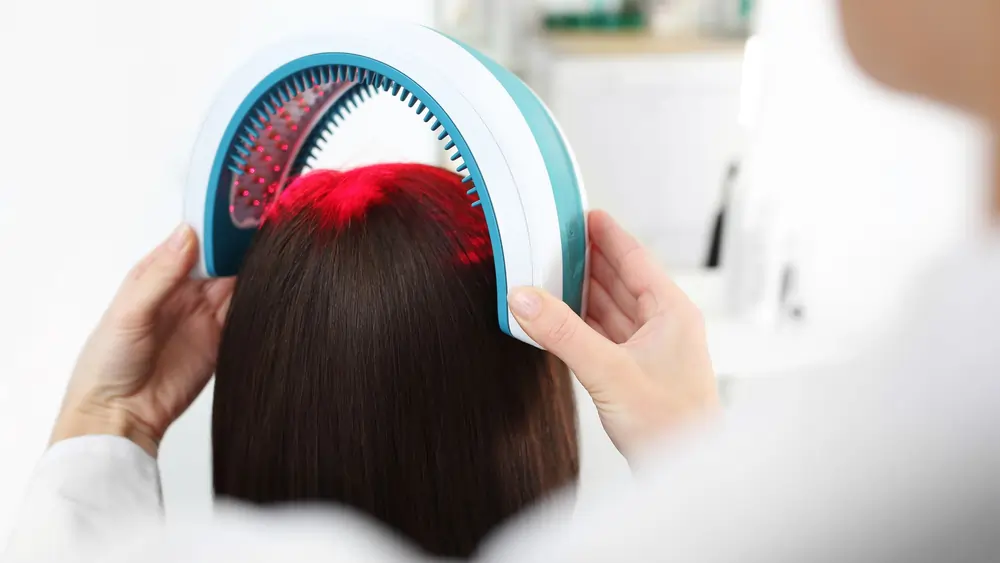Tinea Capitis sometimes referred to as the ringworm of the scalp, is a condition brought on by a fungus. In this article, you will discover everything you need to know about Tinea Capitis. How you can get it, the symptoms, treatments and possible complications.
More About Tinea Capitis
The condition known as tinea capitis, or ringworm of the scalp, is brought on by a fungus. On the head, it typically results in bald patches that are itchy and scaly. Due to their round shape, ringworms receive their name. No worms are present.
An infectious condition, scalp ringworm may spread quickly. It most frequently affects babies and kids in school. Athlete’s foot (tinea pedis), jock itch (tinea cruris), and skin ringworm are all connected to tinea capitis. Severe hair loss is uncommon with the non-inflammatory form of tinea capitis.
Causes of Tinea Capitis
Scalp ringworm is brought on by the fungus dermatophytes. Living organisms known as fungi eat decaying tissue such as the outer layers of your hair, skin and fingernails. Dermatophytes thrive in warm, humid environments, which is why they thrive on sweaty skin. Poor personal hygiene and congested environments hasten the spreading of ringworm.
Ringworm is particularly contagious among youngsters. Ringworm may be contracted by contacting an infected person’s skin. You run the danger of contracting the disease if you use combs, beds, or other items that have been touched by an affected individual.
Even domestic animals like cats and dogs can transmit ringworm. These animals might not exhibit any symptoms of the infection, though.
The following are some ways that tinea capitis could spread:
- Person to person: In direct skin-to-skin contact with an infected individual, ringworm is frequently transmitted.
- Animal to person: By coming into contact with an infected animal, you might develop ringworm. Tinea capitis can spread while touching or grooming ringworm-infected animals. Ringworm is quite typical in cows, pigs, cows, goats, pigs, kittens, and puppies.
- Objects to a person: By coming into contact with items or surfaces that an infected person or animal has recently touched, tinea capitis may spread. This covers things like clothing, towels, linens, brushes and brushes.
Symptoms of Tinea Capitis
Itchy spots on the scalp are ringworms’ most noticeable characteristic. Near the scalp, sections of hair may fall out, creating bare patches or red, scaly, regions. Where the hair has fallen out, there can be black specks visible. These spots may eventually enlarge and spread if left untreated.
The entire scalp may be affected by ringworm or tinea capitis. What you could look for:
- You could notice bald patches with little black spots where your hair has fallen out.
- You will find flaky skin patches that are puffy or inflamed.
- kerion, which is pus-filled sores.
- Your scalp will become very itchy.
- You will discover that your lymph nodes have swollen.
- You could develop a fever.
Diagnosis of Tinea Capitis
A visual examination is frequently sufficient for a clinician to identify ringworm ( Tinea Capitis). Your physician could illuminate your head with a Wood’s lamp to look for infection-related symptoms.
To verify the diagnosis, your physician could also gather a sample of your skin and/or hair. The appearance of fungus in the collection is next checked in a lab. This entails using a microscope to examine your hair or a sample from a crusty spot of your scalp. This procedure might take several weeks.

Various Treatments For Tinea Capitis
Medical treatment should start after microscopic or culture confirmation has been made. A person’s health influences the therapy option for tinea capitis.
Treatment for ringworm or tinea capitis often involves taking oral antifungal medicine on prescriptions for one to three months. For tinea capitis, creams, lotions, or powders don’t help. The following pharmaceutical antifungal drugs are used to treat tinea capitis or ringworm: Griseofulvin, and Fluconazole Terbinafine Itraconazole
Oral antifungal medicine is also part of the treatment for tinea capitis in adults. To ensure that the infection clears entirely, you must take the medicine for at least six weeks. Itraconazole and Terbinafine are two examples of adult antibacterial medicines taken orally. Additionally, your doctor can advise using antifungal treatments, selenium sulphide shampoos and steroids.
You may also take some natural medicines to promote healing, such as apple cider vinegar, garlic, or turmeric. However, battling the fungus effectively and long term requires more than just home treatments.
How to Help Prevent Tinea Capitis Contraction
Tinea Capitis is challenging to avoid. It is frequently caused by a fungus, and it can spread even before symptomatology shows. Follow these instructions to lower your chance of developing tinea capitis.
- Recognize the possibility of ringworm from infected individuals or animals.
- shampooing often Make sure to routinely cleanse your hair, particularly after haircuts.
- Coconut oil and selenium-infused pomades may help prevent tinea capitis.
- Wash your hands frequently, especially after interacting with pets.
- Don’t touch diseased animals. The illness frequently resembles a patch of skin without fur.
- Ask your veterinarian to inspect any pets or other animals that may be carriers of tinea capitis.
- Don’t distribute private material. Teach kids that their clothes, hairbrushes, towels, sporting equipment and other intimate goods are not to be used by others.
Risk Elements For Tinea Capitis
Risk elements for s tinea capitis include the following:
- Age. Children in preschool and elementary school are more likely to get tinea capitis.
- encounters with young toddlers. Ringworm or tinea capitis outbreaks are frequent in schools and child care facilities because the condition spreads quickly via contact.
- contact with animals. Pets like cats or dogs may have the virus without displaying any symptoms. Children who play with the animal’s risk contracting the sickness.
- In the worst-case scenario, the fungus may potentially enter the circulation as it spreads further. It could even infect vital organs.
When Should You Consult Your Doctor?
Similar symptoms can be seen in a number of scalp diseases. If you or your child has any hair loss, scalp itching or flaking, or any additional odd scalp symptoms, consult a doctor right away. It’s crucial to have a precise diagnosis and early prescription medication therapy. Using over-the-counter treatments, lotions, or powders won’t get rid of tinea capitis.
What is The Duration of Tinea Capitis?
Curing fungus infections could be challenging. Your youngster must take their antifungal medicine exactly as prescribed. They might need to continuously take an antifungal drug for at least six weeks. Even while the illness in your kid may appear to be improving or even resolved, if the infection is not thoroughly managed, it will return. After adolescence, tinea capitis frequently goes well on its own.
Does Hair Loss That is Caused by Tinea Capitis regrow?
The excellent thing at this stage is that hair loss due to tinea capitis is only transient. The majority of the time, after a fungal infection has been treated, hair growth will return.
It’s conceivable that the fungus’s hair loss has just highlighted pre-existing hair loss problems, such as genetic hair loss if your hair does not come back. Hair transplantation could be the only method to cover up the remaining bald spots.




